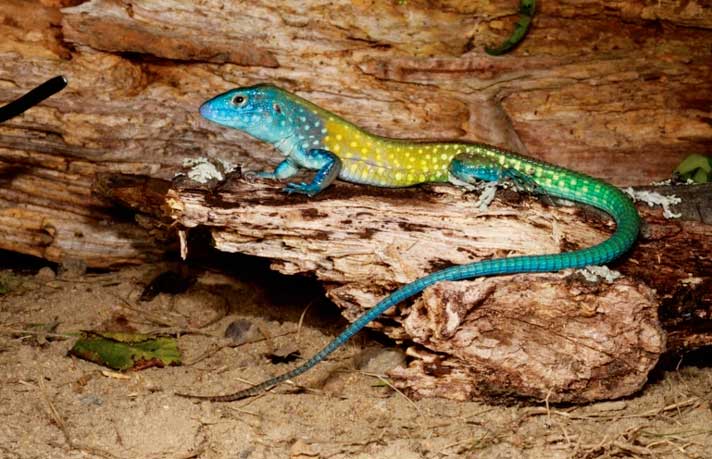
Description:
Scientific name: Cnemidophorus lemniscatus
Life span: 1-4 years
Hatchling Rainbow Whiptail Lizards have nine long, white stripes that extend into areas of their bodies that are bluish-brown in color. Some of these stripes stand out more than others and are not always equal to one another. Both males and females have spots along their rear legs as juveniles, but the spots on the females stay, as they get older whereas the males lose them. When fully grown, the males exhibit stunning, brilliant colors all over their bodies, earning them the nickname “Rainbow” Lizards. In contrast, the female’s coloring tends to be plainer and less attractive.
Native Region/Habitat
Originating in Central America, the Caribbean, and northern South America are rainbow whiptail lizards. They tend to stay close to regions where there is a reliable water source and are frequently seen near the borders of forests or along sandy beaches.

Behavior:
Being daily because they are frequently searching for little insects to eat, Rainbow Whiptails are quite active during the day. Although they can coexist in the same habitats, male and female Rainbow Whiptail Lizards can clash during mating season.
Care As a pet/In captivity:
Rainbow Whiptail Lizards require a 3 or 4ft (36-48″) enclosure because they are an active species. Males must be separated as adults but can be kept together as juveniles. If you have enough skins for each female, they can stay together. They can dig like they would in the wild if the substrate is deep-based sand or soil. Make sure to use a lot of natural accents, such as plants, branches made of cork, logs, and other items from our natural line.
For this species, bathing temperatures should range from 95 to 107 F. (35-40F). A combination UVB/UVA bulb or a basking light coupled to a dimming thermostat can be used to achieve this. To aid in UVB synthesis, a high spectrum UVB light approximately 10% will be more effective.
A medium-sized water dish in the enclosure and a light misting of the substrate in the morning may easily maintain humidity levels of between 40 and 60 percent.
Rainbow whiptail lizards consume a variety of live food, such as crickets, locusts, roaches, and mealworms. Three to four times per week, food should be coated with calcium powder, and at least once or twice per week, a vitamin supplement should be added.
Table





